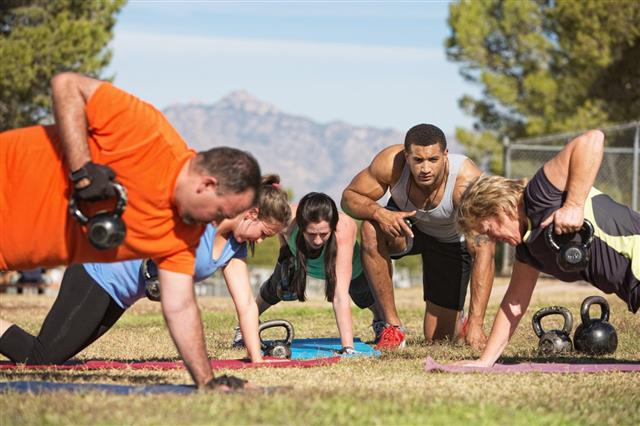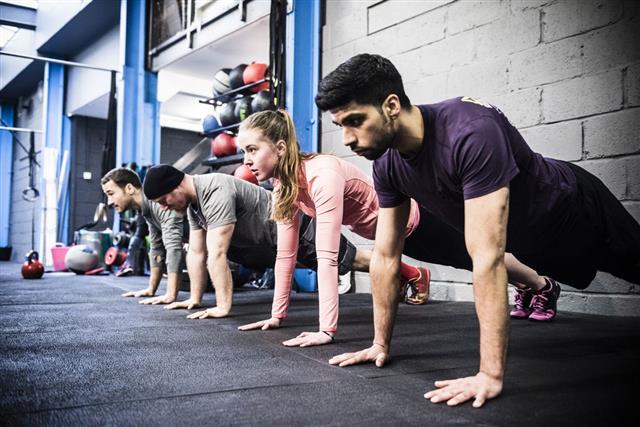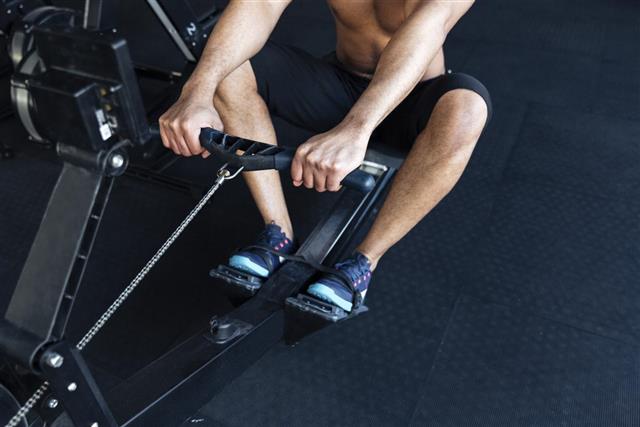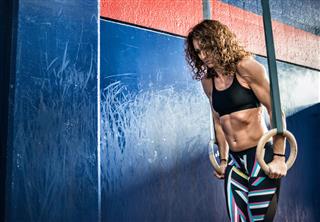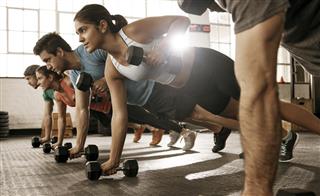
While you exercise, oxygen is released to provide you with energy to perform that action or exercise. The amount of oxygen released and how much the muscle tissues result in 2 different exercise forms, anaerobic and aerobic. Aerobic forms are well-known, scroll below to learn the anaerobic forms of exercise.
There are different types of exercise mechanisms, based on the intake of oxygen during working out. While aerobic is based on taking in a lot of oxygen, anaerobic involves less or little oxygen to exercise. This is nothing to do with breathing in and out (in all exercises, you need to exhale and inhale) but rather how your tissues deal with the oxygen content present.
Anaerobic exercises means intense and pushing to the maximum exertion, in a limited or short duration of time. Such an exercise mechanism allows the body to make normally impossible heavy or tasking movements but they cannot be kept up for a long time. In this article, learn which are the different types of anaerobic exercise, that maintain a “short but powerful” work out strategy.
List of Anaerobic Exercises
Below are the variants of anaerobic exercises with a brief description of the activity involved.
Rowing
Here both the sport and the exercise are considered anaerobic in terms of the individual’s body usage. The position of lying, with feet forward in stirrups and pulling the arms backwards to simulate a rowing motion, exercises all major muscles located in the arms, legs and abdomen. Rowing involves a light warm up, followed by an intense period of rowing as long as your muscles can hold on, like for 1 or 2 minutes and then slowly decreasing your pace and rowing gently to relax.
Push-Ups
A form of muscle building, that involves the chest, arms, upper back and shoulders, push-ups require short but intense bursts of energy to push up and then lower the body. There are many variations possible, one can perform push ups prone to the floor, at an incline or decline in elevation or between 2 chairs.
Pull-Ups/Chin Ups
This exercise involves exerting force to pull oneself up, to touch a certain height, with the support of a fixed bar or beam. The entire mass of an individual is pulled up solely by the arms, investing heavily in upper body strength. Muscles worked include the latissimus dorsi (lower back muscle, behind the arm), biceps, deltoid and the teres major.
The chin can touch the bar or be brought above the bar. There are different variations of the pull-up, depending on the grip exerted, height that the body is pulled up by and even if chin is pulled in front or behind the bar.
Isometrics
This form of strength training involves a particular muscle or one group of muscles. Such exercises do not allow the lengthening or stretching of the muscle and the muscle might not move at all. Isometric exercises are commonly used for strengthening a muscle injured or damaged due to an accident. It can be thought of as a form of physical therapy.
Such exercises are also static, where the individual is in a stationary position, other parts of the body do not move. The best example of such an isometric exercise is pushing a wall or holding a weight in a fixed position for some time.
Sit-Ups
This is a tougher form of anaerobic exercise and if not performed properly, can be slightly dangerous on the body. From a supine position, with back completely to the floor, one must rise with one’s back and touch toes or knees, with only the butt touching the ground. This involves the abdominal and hip muscles and can put strain on the back, with the exertive force required to “lift” the body up. This exercise is meant to strengthen or toughen the stomach muscles, not to reduce fat.
Weight Training
Strength training activity, where the body expends energy in lifting fixed weighted objects, in a repetitive manner. Lifting weights not only increases the size of muscles, it increases their potency or strength as well. Rarely is one muscle exercised, instead muscle groups are exercised on the whole.
Form, posture, over-straining or exertion are some common issues, that can occur during weight training. Using machines or using standard weights, in the form of dumbbells or barbells are 2 possible exercise mechanisms under weight training.
Interval Training
This technique of physical training is an interesting combination of aerobic exercises in an anaerobic mechanism. Take cycling for example, which is an aerobic exercise. Cycling in short sprints or bursts of sudden energy and then reducing the pace for a restful interval, before once again, picking up the pace is one form of interval training.
At the peak of the sprint or burst, the person’s exertion levels are pushed to the max. A recovery or rest period is needed to allow the body to catch up and to breathe. Interval training should be done under strict training supervision and should not be undertaken by beginners to exercise.
Other types of anaerobic exercise include:
- Sprinting Activities
- Tug of War
- Jumping Rope
- Climbing Hills or Steps
- Squats
In addition, some sports like football, basketball and soccer utilize the anaerobic concept, where a player exerts him/herself for short bursts of energy to make a play or score, followed by a period of storing up energy for the rest of the game.
The benefits of anaerobic exercising are multi-fold. Muscles are strengthened and honed, so a lean, muscular form is attained. The lung muscles are also strengthened, with the individual’s necessary oxygen intake reduced. As a whole, the cardio-respiratory system is improved. For those looking to obtain maximum performance from training or for those looking for effective weight loss, do incorporate some forms of anaerobic exercise in your training regime.

